Gardening has evolved far beyond traditional rows of vegetables and basic flower beds. The modern home garden is a canvas for creativity, sustainability, and personal expression.
Whether you’re working with a sprawling backyard or a tiny apartment balcony, there’s never been a better time to transform your space into something extraordinary.
This year’s gardening trends blend functionality with aesthetics in ways that feel both fresh and timeless. From vertical growing systems that maximize every inch of space to indoor herb walls that bring nature directly into your kitchen, these ideas will help you create a garden that’s uniquely yours.
Indoor Garden Transformations
1. Living Kitchen Herb Walls
Transform your kitchen wall into a fragrant herb garden that’s both practical and beautiful. Install floating shelves or a pegboard system to hold small pots of basil, rosemary, thyme, and oregano.
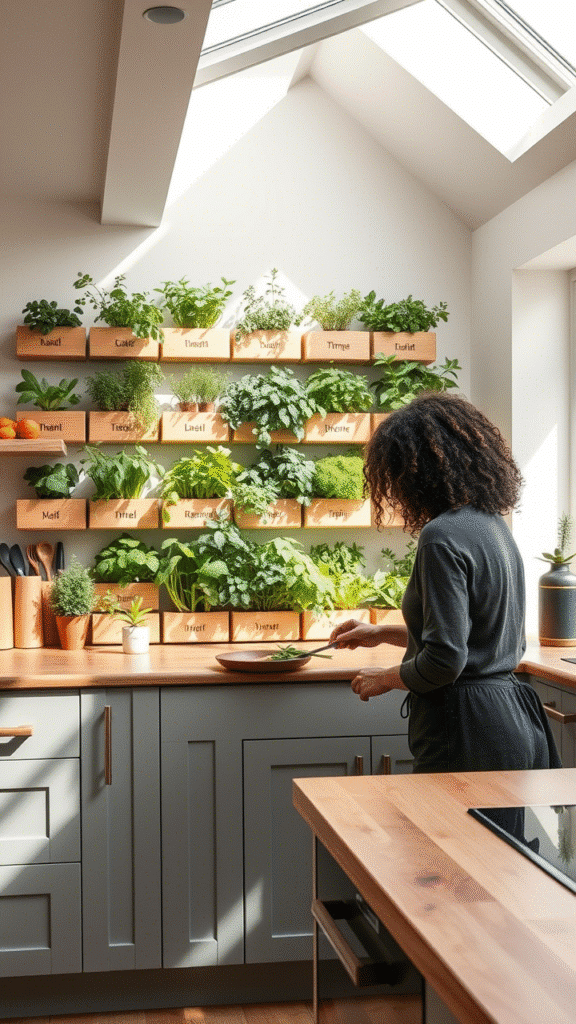
The convenience of having fresh herbs within arm’s reach while cooking is unmatched, and the aromatic experience adds a sensory dimension to your culinary space.
Consider using mason jars with drainage holes drilled in the bottom for a rustic aesthetic. Attach them to a wooden backing with pipe clamps for an industrial look that’s surprisingly elegant.
2. Bathroom Jungle Vibes
Your bathroom’s humidity makes it perfect for tropical plants that thrive in steamy conditions. Hang trailing pothos from the ceiling, place snake plants in corners, and add a fiddle leaf fig near the window if you have one.
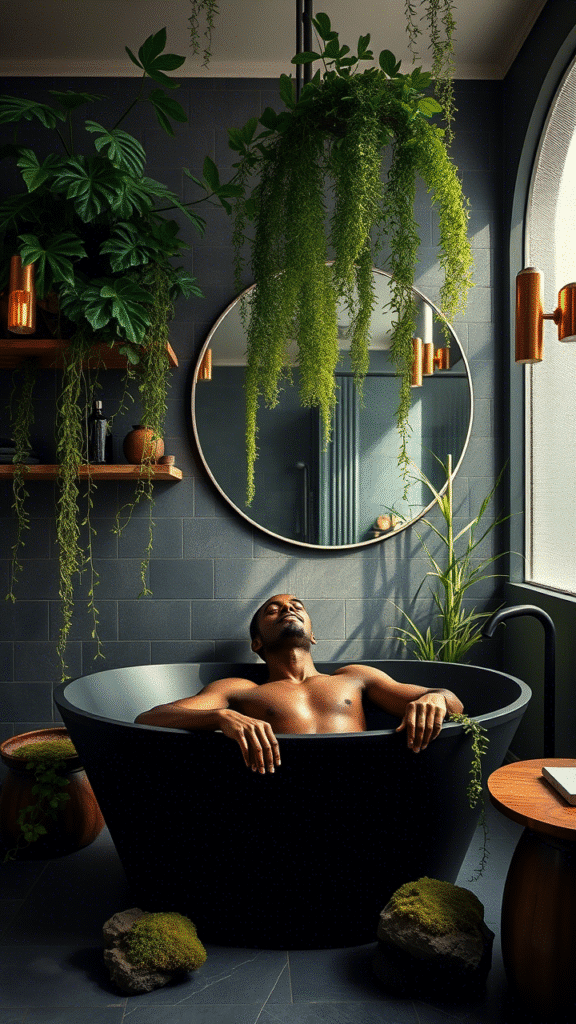
The contrast between sleek bathroom fixtures and lush greenery creates an unexpected oasis.
Boston ferns work particularly well on bathroom shelves, their delicate fronds softening hard surfaces. Just make sure there’s adequate ventilation to prevent mold growth – something many people overlook when creating these indoor jungles.
3. Bedroom Air-Purifying Station
Create a dedicated corner in your bedroom focused on plants known for their air-purifying qualities. Aloe vera, spider plants, and peace lilies not only clean the air but also add a calming presence to your sleep space.
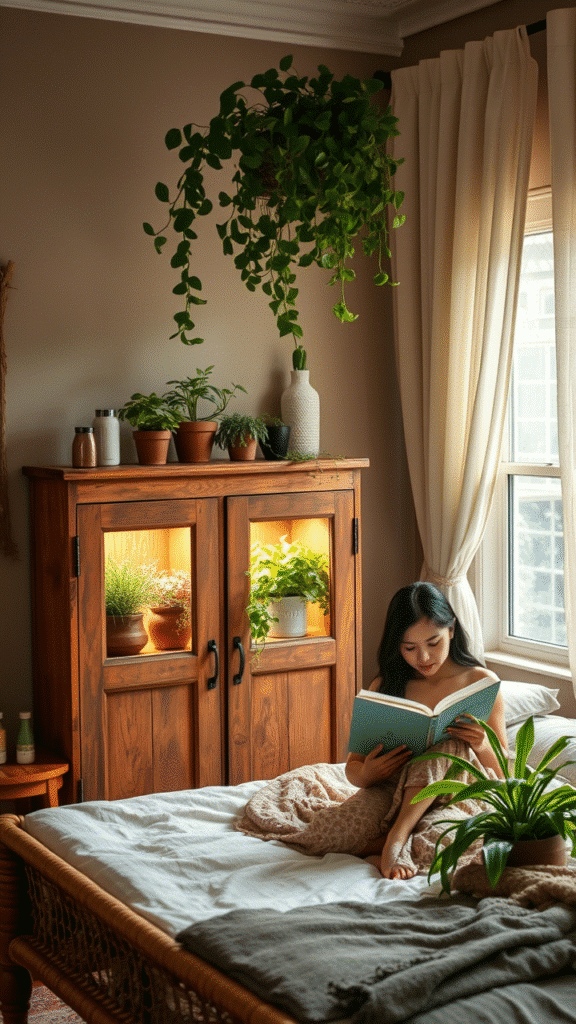
Group them at varying heights using plant stands and hanging planters.
The psychological benefits of waking up surrounded by living plants can’t be overstated. It’s like bringing a piece of the outdoors into your most personal space, creating a natural sanctuary that promotes better rest.
4. Window Sill Micro-Gardens
Even the smallest windows can become productive growing spaces with the right approach. Use tiered plant stands to maximize vertical space, or install narrow shelves across the window frame.
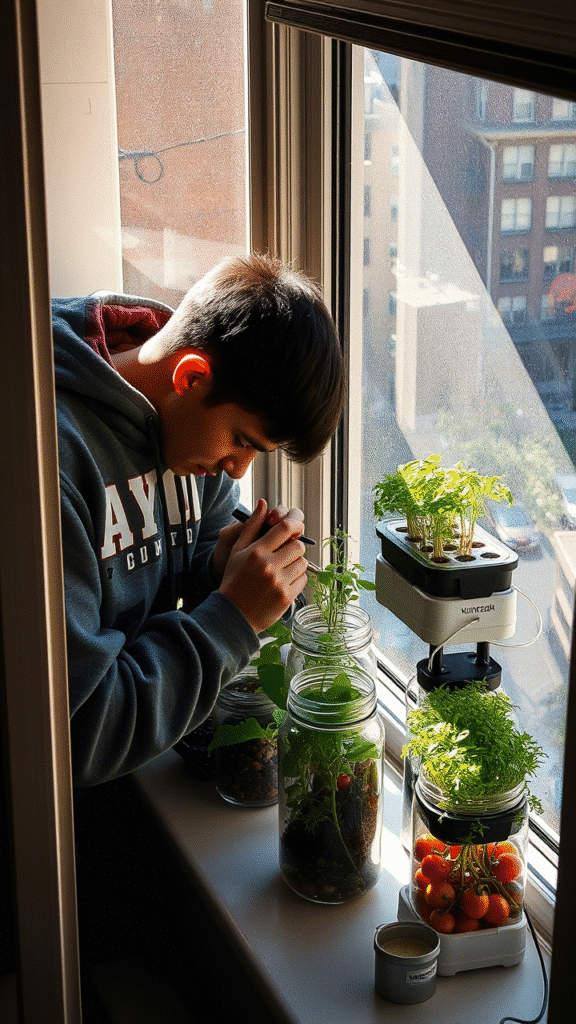
Succulents, small herbs, and cherry tomatoes all thrive in sunny window locations.
Consider rotating seasonal displays – spring seedlings, summer herbs, autumn succulents, and winter greenery. This keeps your window garden interesting year-round and gives you something to look forward too.
5. Closet Growing System
Convert an unused closet into a controlled growing environment using LED grow lights and ventilation fans. This setup is perfect for starting seedlings, growing microgreens, or maintaining a year-round supply of fresh lettuce and spinach.
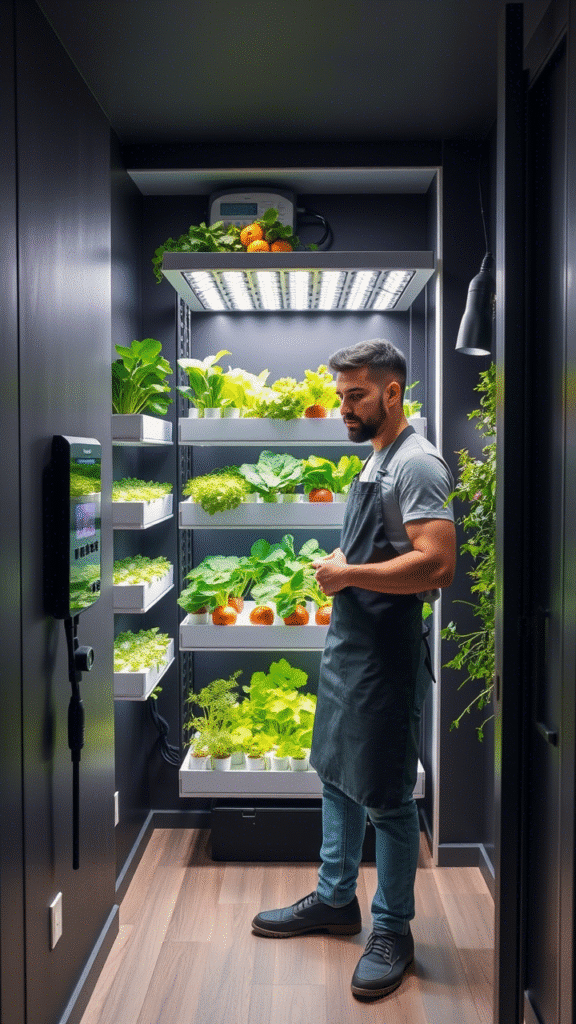
The enclosed space allows you to control every aspect of the growing environment.
Install adjustable shelving to accommodate plants of different heights as they grow. A small fan keeps air circulating, preventing fungal issues that can plague indoor growing setups.
Creative Outdoor Spaces
6. Vertical Pallet Gardens
Repurpose wooden pallets into stunning vertical gardens that maximize growing space while adding architectural interest to walls or fences. Sand the pallets smooth, add landscape fabric backing, and fill with soil and plants.
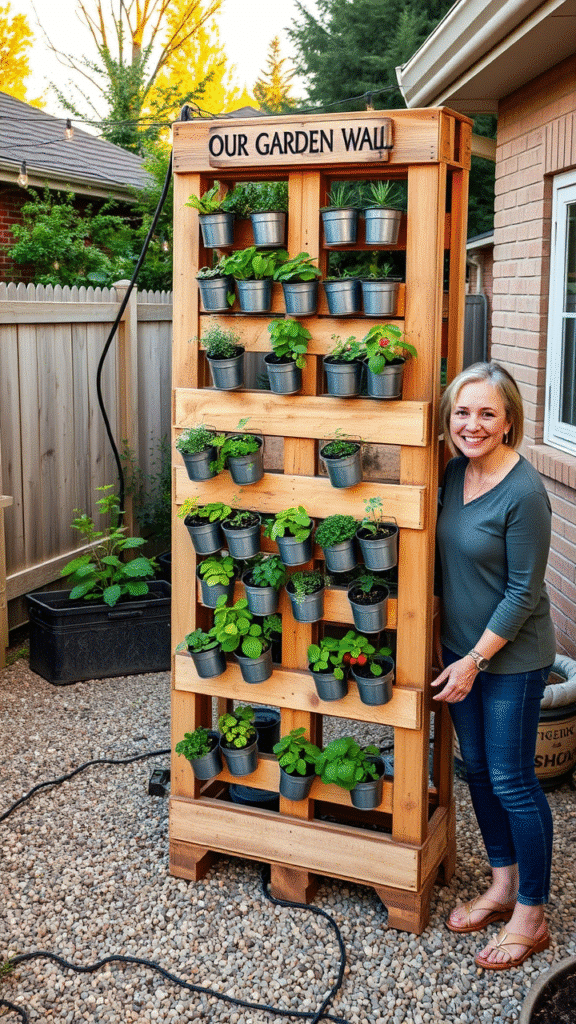
These work excellently for strawberries, herbs, and trailing flowers.
The rustic charm of weathered wood paired with cascading plants creates texture and visual depth that’s hard to achieve with traditional horizontal planting. Plus, it’s an incredibly budget-friendly way to add serious gardening space.
7. Container Garden Clusters
Group containers of various sizes and materials to create dynamic planting displays. Mix terracotta, glazed ceramic, and galvanized metal for textural variety. Plant each container with different species that complement each other in color and form.
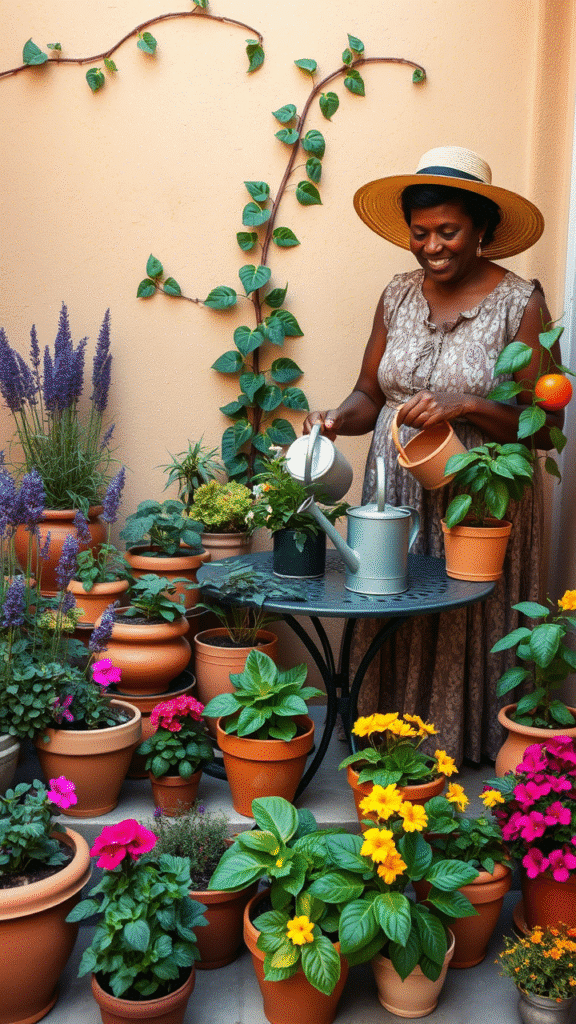
This approach works particularly well for renters or anyone who might need to relocate their garden. Everything stays portable while creating the visual impact of a permanent installation. Don’t forget to consider drainage – it’s the most common oversight in container gardening.
See Also: 21 Backyard Oasis Ideas 2025: Stunning Outdoor Designs for Every Space
8. Raised Bed Geometric Designs
Move beyond rectangular raised beds to create geometric patterns that turn your vegetable garden into a work of art. Hexagonal, triangular, and diamond-shaped beds create visual interest while maintaining practical growing space.
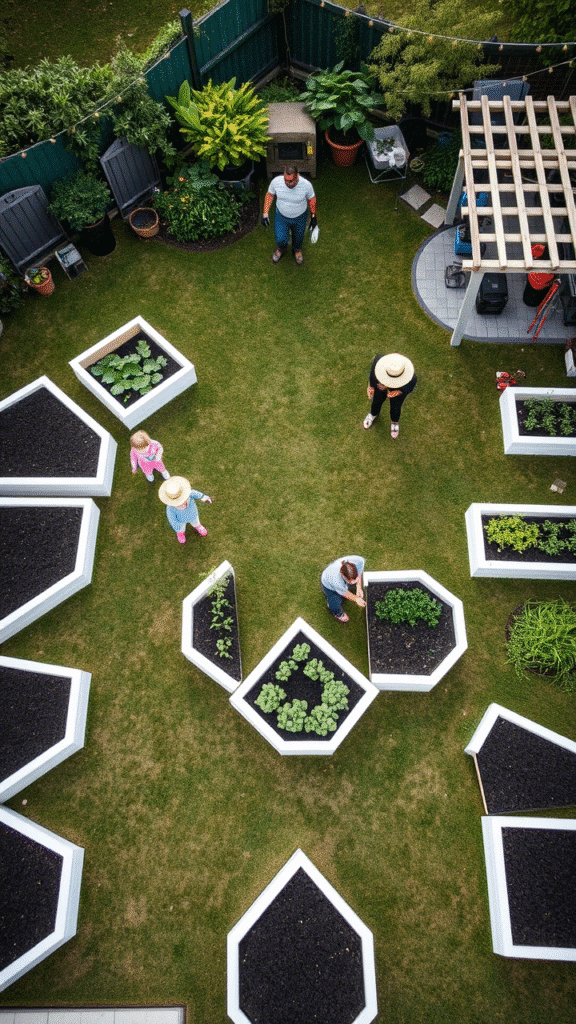
Use different materials – cedar, composite, or even concrete blocks – for varied textures.
The key is planning pathways between beds that are wide enough for comfortable access but narrow enough to maximize planting area. A well-designed raised bed system becomes a garden feature in itself.
9. Rain Chain Water Features
Replace boring downspouts with decorative rain chains that guide water into collection barrels or garden ponds.
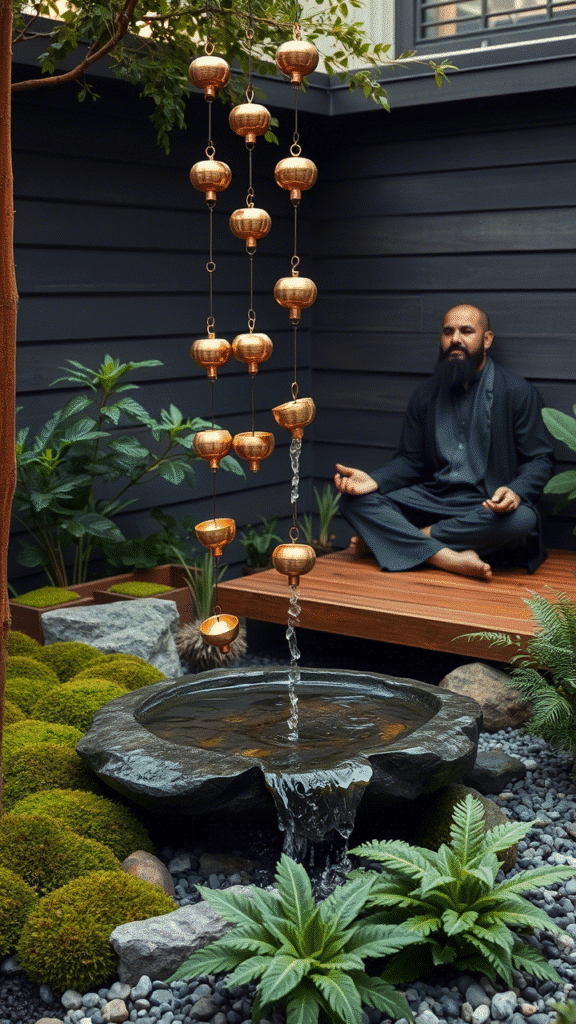
The gentle sound of water flowing down copper or bamboo chains adds a meditative quality to your outdoor space while serving a practical purpose.
Position collection containers strategically to water specific garden areas during rain events. It’s sustainable water management that doubles as kinetic sculpture for your landscape.
10. Pollinator Paradise Corners
Dedicate specific areas of your garden to native plants that support local pollinator populations. Research which plants are indigenous to your region and create dense plantings that provide nectar sources throughout the growing season.

Include plants with different bloom times to ensure continuous food sources.
Native plants typically require less water and maintenance once established, making them an environmentally responsible choice. The butterflies, bees, and birds they attract add movement and life to your garden that’s impossible to replicate artificially.
Space-Maximizing Solutions
11. Hanging Garden Spheres
Create three-dimensional planting opportunities with hanging spheres made from wire frames lined with coconut fiber. Plant succulents, air plants, or trailing varieties through the openings for living sculptures that can be viewed from all angles.
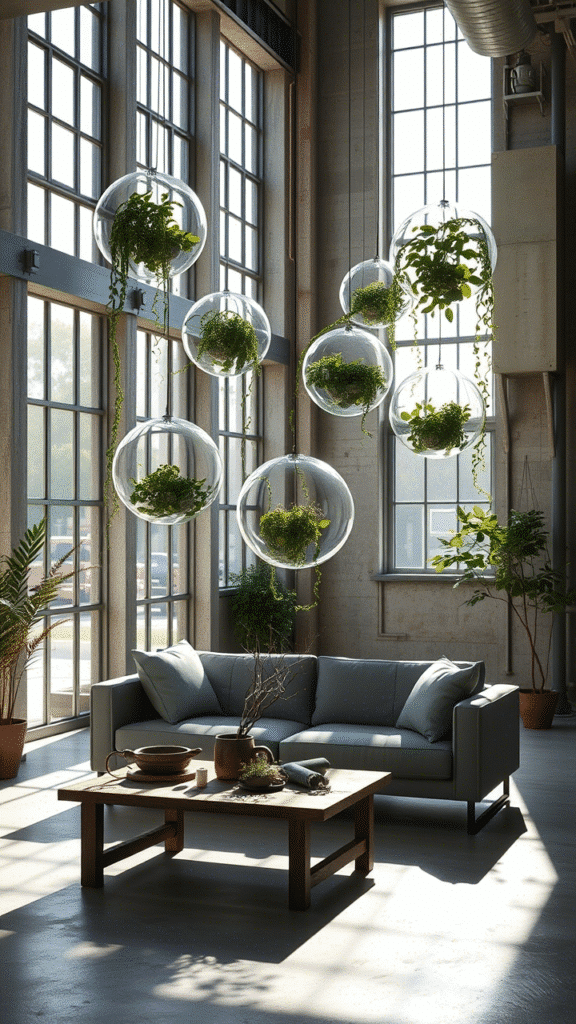
These work particularly well in covered outdoor areas like patios or pergolas where they’re protected from harsh weather but still receive adequate light. The spherical shape creates interesting shadow patterns as the sun moves throughout the day.
12. Tiered Planter Pyramids
Build pyramid-shaped planters that allow multiple levels of growing in a compact footprint. Each level can house different plants – perhaps herbs on top, vegetables in the middle, and trailing flowers cascading from the bottom tier.
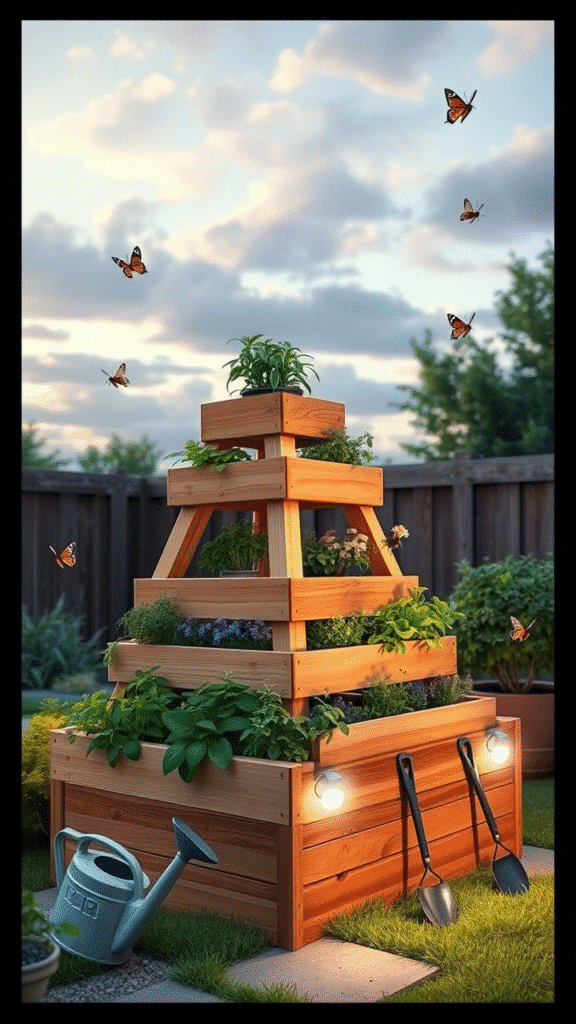
The pyramid shape ensures all plants receive adequate sunlight while creating an impressive vertical focal point. Use cedar or composite materials for longevity, and include built-in irrigation for easy maintenance.
13. Fold-Down Balcony Gardens
For apartment dwellers with limited balcony space, create fold-down planting systems that can be stored flat against walls when not in use. Use hinges and support chains to create stable growing platforms that don’t permanently consume valuable floor space.
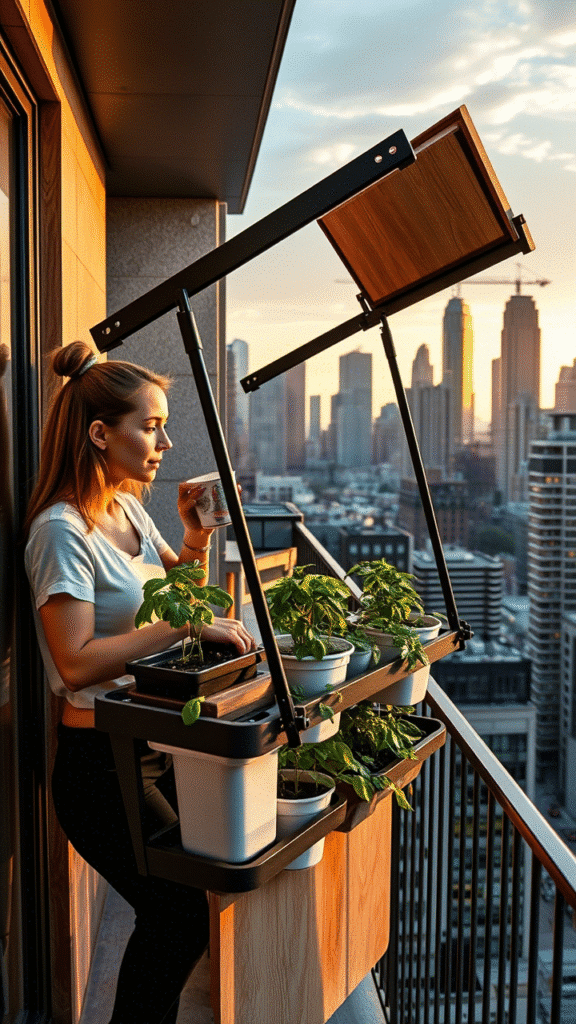
This approach is perfect for seasonal gardening or situations where you need to occasionally clear the space for entertaining. The engineering challenge of creating stable, fold-away planters makes for a satisfying DIY project.
See Also: 23 Best Halloween Decor Ideas 2025 for a Spooky-Chic Home
14. Underutilized Vertical Surfaces
Look for unexpected places to add growing space – the sides of sheds, blank fence panels, or even the space under deck stairs. These areas often receive filtered light that’s perfect for ferns, hostas, or shade-loving herbs.
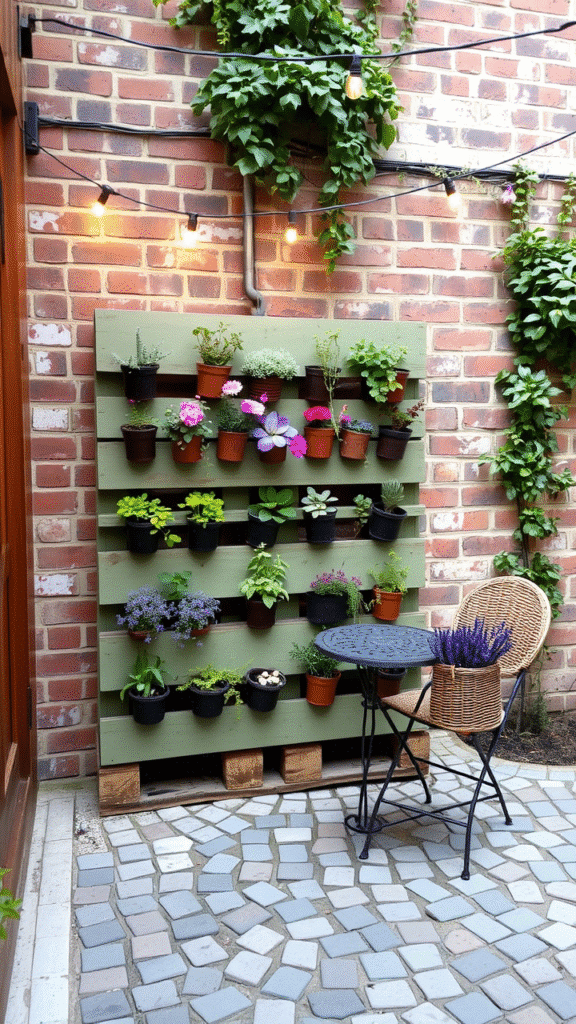
Mounting systems can be as simple as screw-in hooks for hanging baskets or as elaborate as custom-built trellis systems. The goal is maximizing every square inch of potential growing space without overcrowding.
Sustainable Growing Methods
15. Aquaponic Systems
Combine fish-keeping with vegetable growing in closed-loop systems where fish waste provides nutrients for plants, and plants clean the water for fish. These systems can be scaled from desktop versions to backyard installations that provide both food and entertainment.
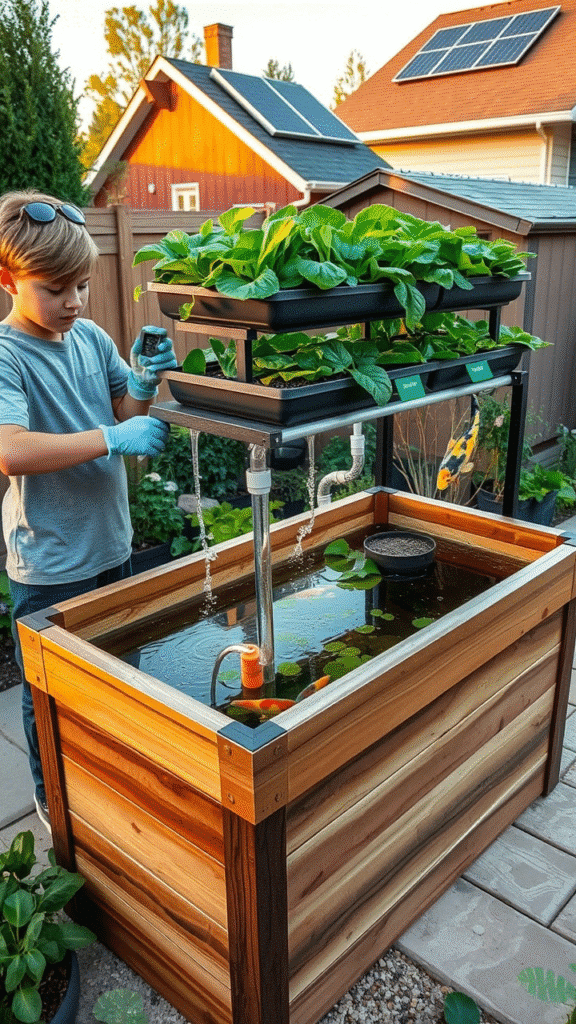
The symbiotic relationship between fish and plants creates a balanced ecosystem that’s fascinating to observe and maintain. Plus, you get both fresh vegetables and potentially fresh fish from the same system.
16. Composting Integration
Design your garden layout with composting as a central feature rather than hiding it in a back corner. Attractive compost bins can be made from cedar slats or decorative wire panels that complement your garden’s aesthetic while turning kitchen scraps into black gold.
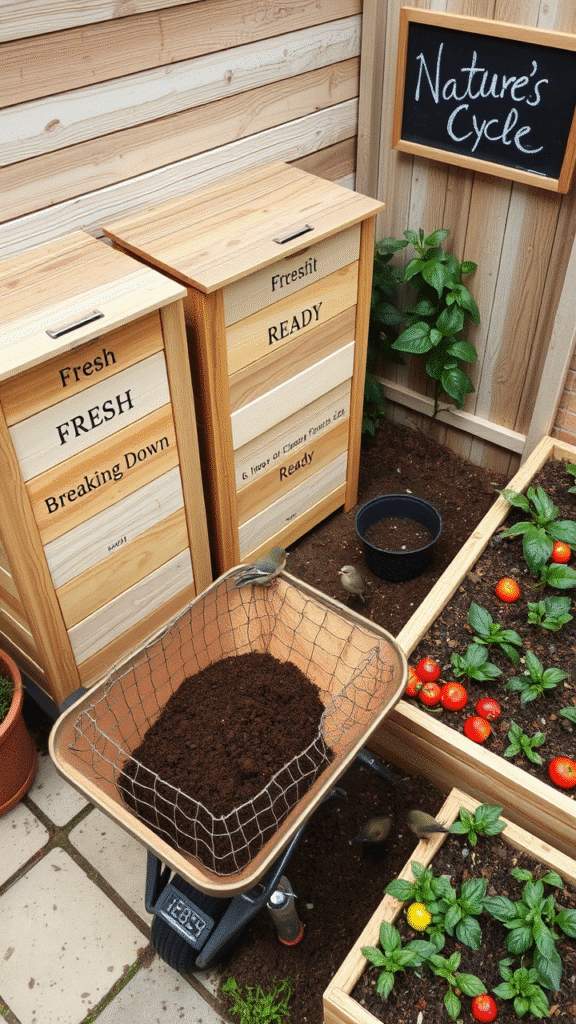
Three-bin systems allow for continuous composting – one bin for fresh materials, one for actively decomposing matter, and one for finished compost ready to use. The process becomes part of the garden’s visual narrative rather than an afterthought.
17. Rainwater Harvesting Features
Integrate water collection into your garden design with decorative rain barrels, underground cisterns, or constructed wetlands that manage stormwater runoff. These systems reduce your reliance on municipal water while preventing erosion and flooding issues.
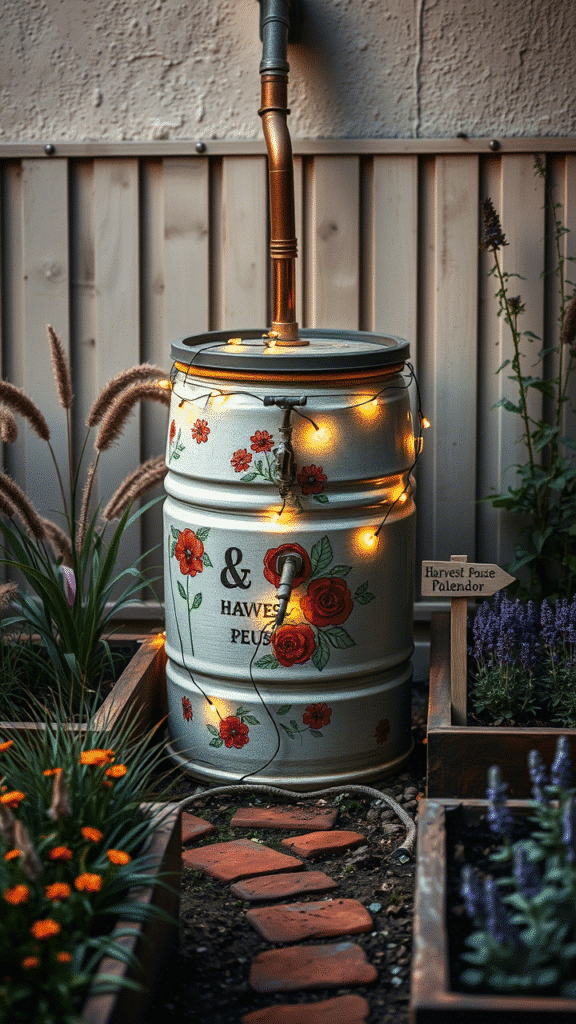
Consider the aesthetic integration of water storage from the beginning of your design process. Rain barrels can be painted or disguised with trellises to blend seamlessly with your garden’s style.
18. Greywater Garden Systems
Design planted areas that can receive and filter greywater from sinks, showers, and washing machines. Specific plants excel at processing household wastewater while thriving in consistently moist conditions.
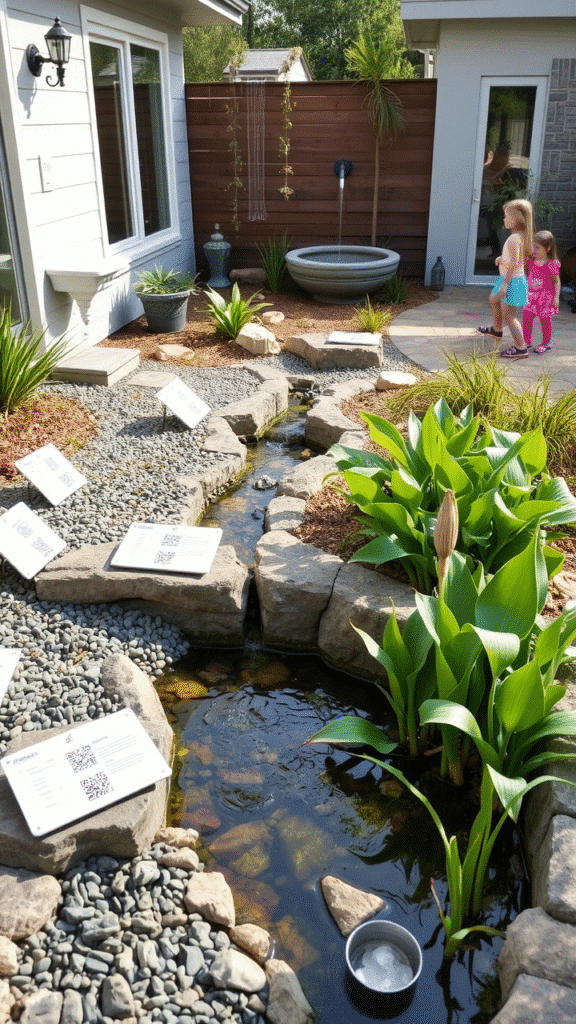
This approach requires careful planning and potentially permits depending on local regulations, but it’s an excellent way to maximize water use efficiency while creating lush, productive garden areas.
Specialty Garden Themes
19. Moonlight Gardens
Plan plantings specifically for evening enjoyment with white and pale flowers that seem to glow in moonlight, fragrant plants that release scent in cool evening air, and night-blooming species that put on their show after dark.
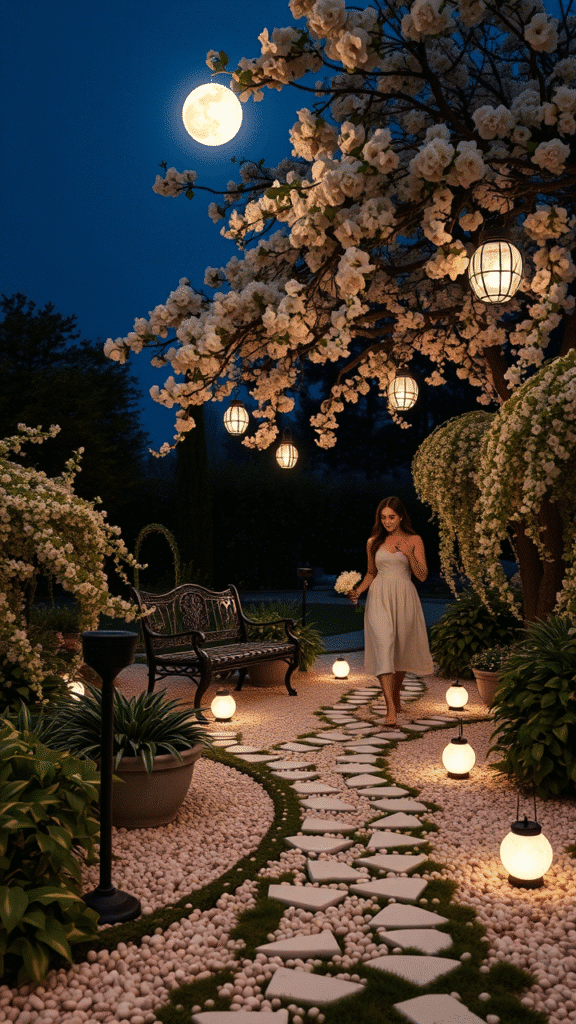
Include comfortable seating areas with subtle lighting that doesn’t overpower the natural beauty of plants designed for nighttime appreciation. Evening primrose, four o’clocks, and night-blooming cereus create magical after-dark experiences.
20. Sensory Experience Gardens
Design plantings that engage all five senses through varied textures, scents, sounds, tastes, and visual elements. Include plants with interesting bark, fuzzy leaves, rustling grasses, edible flowers, and strong fragrances.
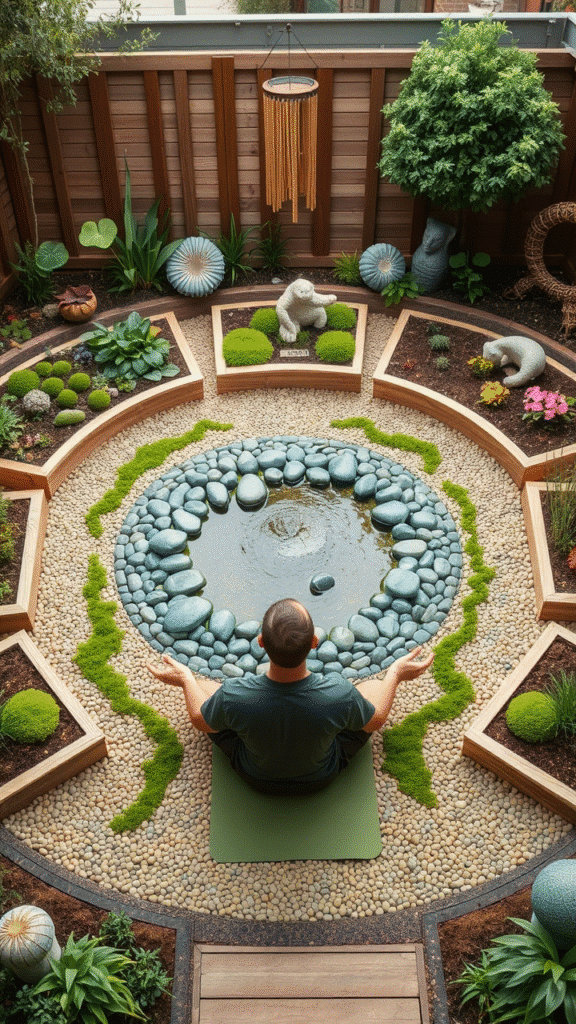
This approach creates gardens that are particularly engaging for children or anyone who benefits from multi-sensory experiences. Lamb’s ear, ornamental grasses, lavender, and mint provide diverse tactile and aromatic experiences.
21. Mediterranean Micro-Climates
Create warm, sunny areas with excellent drainage that mimic Mediterranean growing conditions. Use gravel mulch, terra cotta containers, and drought-tolerant plants like rosemary, lavender, and olive trees to establish the aesthetic.
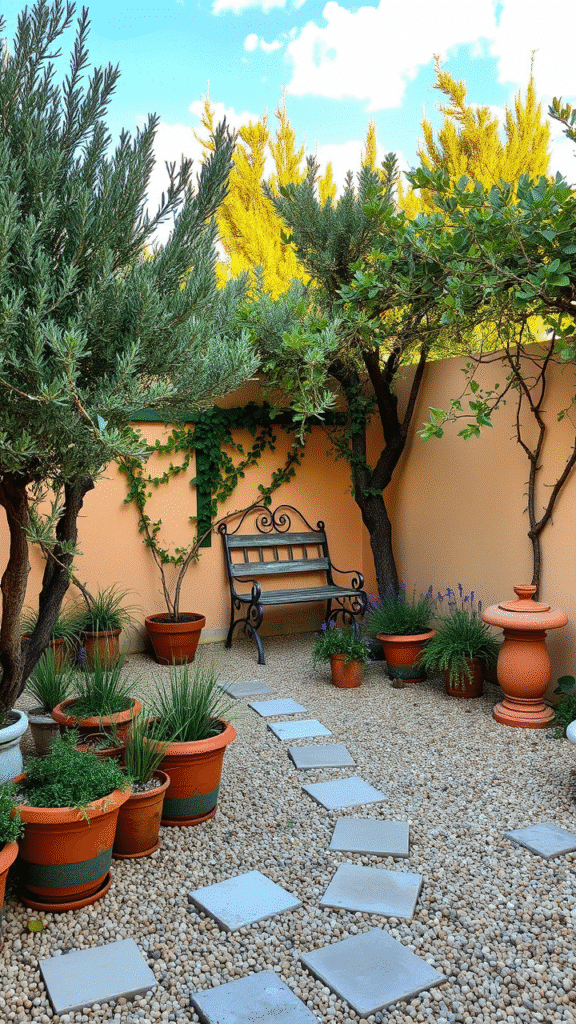
These areas often become the most relaxing spots in the garden, evoking vacation memories and providing herbs for cooking. The key is selecting plants that actually thrive in your climate while maintaining the Mediterranean visual theme.
22. Woodland Shade Gardens
Transform challenging shady areas into lush woodland environments with native shade plants, natural mulches, and meandering pathways. Use fallen logs as natural borders and incorporate moss, ferns, and wildflowers that thrive in low-light conditions.
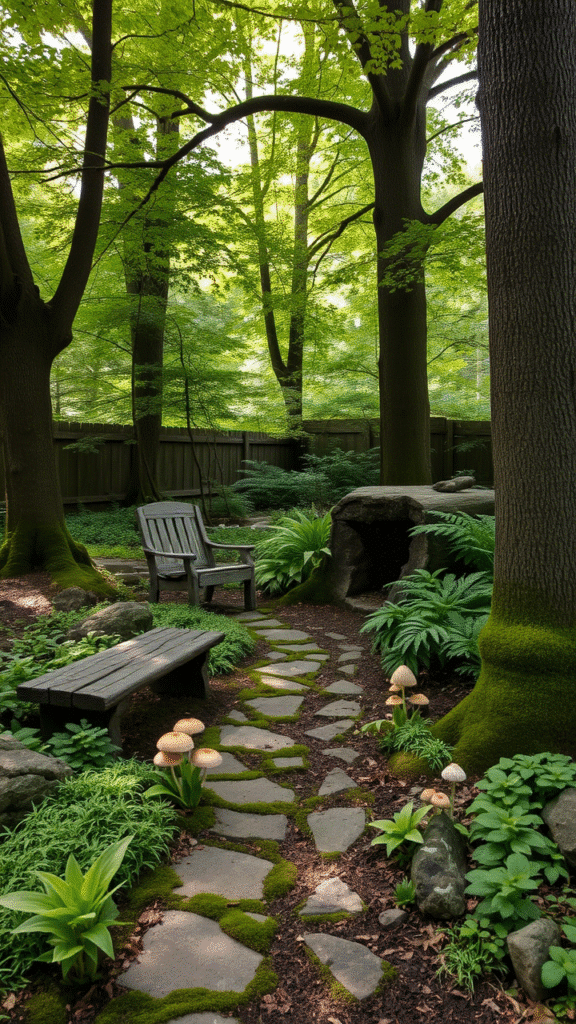
These gardens often become the most peaceful areas of a landscape, providing cool retreats during hot weather and habitat for wildlife that prefers protected environments.
23. Four-Season Interest Gardens
Plan plant combinations that provide visual interest throughout the entire year, not just during spring and summer growing seasons. Include plants with interesting bark, persistent berries, attractive seed heads, and evergreen structure plants.
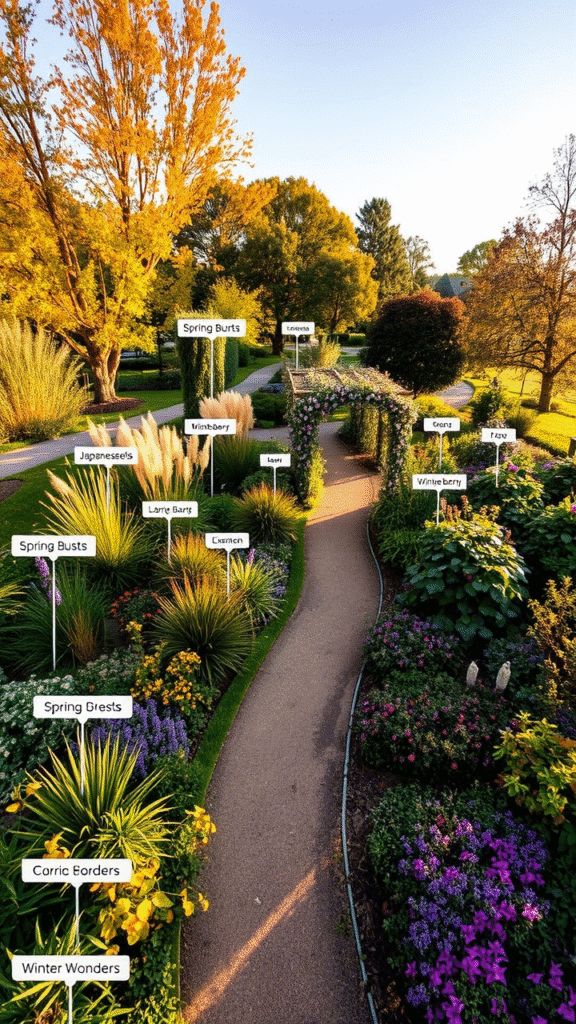
The challenge is balancing seasonal interests without creating a cluttered appearance. Focus on plants that provide multiple seasons of interest – trees with spring flowers, summer shade, fall color, and attractive winter bark structure.
Making It Happen
The beauty of these garden ideas lies not just in their individual merit but in how they can be combined and adapted to your specific situation. Start small with one or two concepts that excite you most, then expand as your confidence and experience grow.
Remember that gardening is ultimately about creating spaces that bring you joy and connect you with nature. Whether that’s a single herb pot on a windowsill or an elaborate backyard ecosystem, the most important element is that it feels right for your lifestyle and space.
The trends shaping gardens in 2025 emphasize sustainability, creativity, and personal expression. These aren’t just places to grow plants – they’re extensions of our living spaces that reflect our values and enhance our daily lives. The perfect garden is the one that makes you want to spend time in it, whether you’re tending plants, entertaining friends, or simply enjoying a quiet moment surrounded by the life you’ve nurtured.
Don’t let perfect be the enemy of good when starting your garden projects. Every expert gardener started with their first seed, their first mistake, and their first success. The learning process is part of the joy, and gardens are forgiving places where failures often become the foundation for future innovations.
“Love home decor? Discover more inspiration on Stylo Magazine!”

